Driving from Reutte to Salzburg we traveled smaller roads in scenic country as well as autobahn. In case we didn't mention it before, the autobahn is pretty much like the U.S. Interstate highway system: limited access, but with "travel centers", or "rest stops" if you will, where one finds restaurants, toilets, and gasoline (benzin). One is obliged to pay for toilet use. We found it quite standardized, usually coin (€.50) operated, but sometimes just a dish or bowl where one is expected to leave the coin. The coin-operated gates would return a small voucher which could then be redeemed with purchases at the shops there.
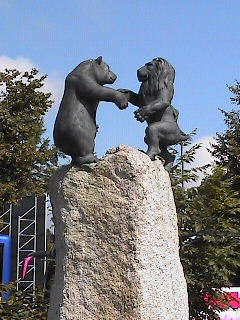
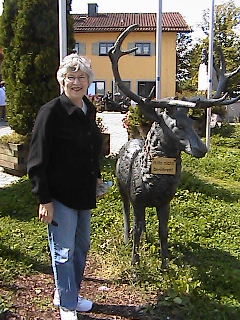
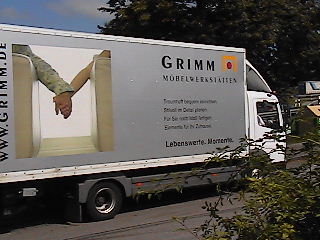
We found the rest stops usually more interesting than those on our Interstates as you can see. The poor stag (Hirsch) had to wear a sign around his neck saying "Bitte Nicht Berühren", "Please Do Not Touch". The stag seems to be a popular icon around here. One sees many businesses with Hirsch incorporated into the name.
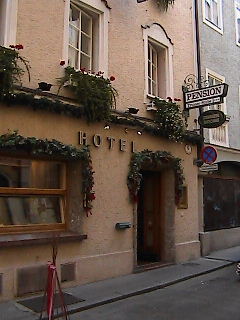
Our Garmin led us through Salzburg to the hotel (Pension) squeezed in among other commercial establishments on a very narrow street. In this case our proprietor had "reserved" a parking space on the street at the hotel door by setting two flower pots in the space. She came out with Marty and moved the pots so we could park and unload.
At the front desk we were given a lengthy introduction to the hotel, the city, the entertainments (tickets and reservations available at the desk, if you please) and, last but not least, the dreaded parking garage. More about that later.
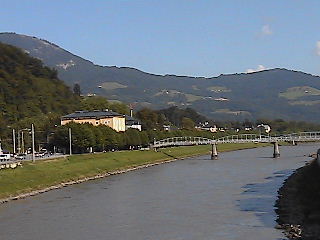
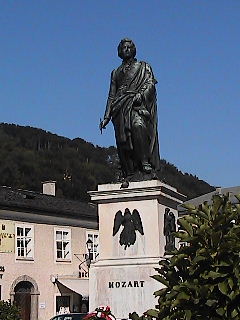
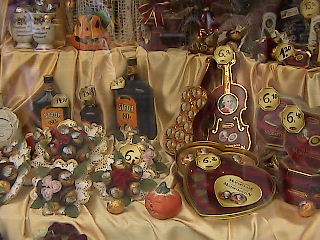
Salzburg started as the city of salt, then became the city of Mozart, and now is the city of tourists. Since pre-historic times salt was the source of wealth throughout this whole region. The Salzach River was a major highway for the nearby salt mines. Today one sees images of Mozart everywhere: from the grand statue in the Mozartplatz, to the ubiquitous candies and trinkets.


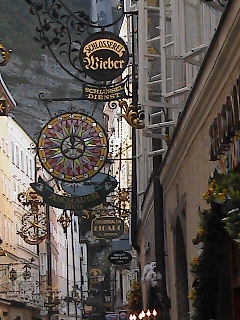
The Getreidegasse is the local shopping mall - with a history. Its wrought iron signs are a tradition from pre-literate days when their pictoral nature helped the written-word-challenged determine the business inside. Note that the "Golden Arches" serve that purpose well.
If you think you see a rock wall in the background of the pictures you are not mistaken. The old section of Salzburg is built between the Salzach River and a solid rock cliff.
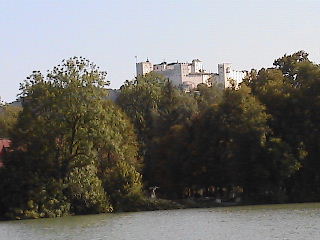
At the top of the cliff is, of course, the castle, known as the Hohensalzburg Fortress. This shot was taken a few miles from the city. The fortress is right above the old town.
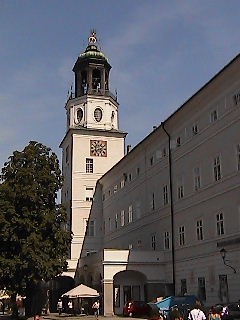
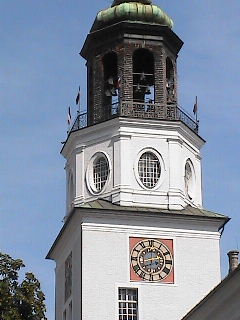
And here is the famous Glockenspiel. It has many bells of different tones and plays tunes via a mechanism similar to that of a music box, many times larger, of course.
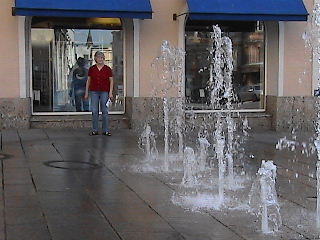

We saw a number of fountains of this ground-level type in the modern parts of the cities. This one was only a couple of blocks from our hotel. We had to hike across the river to get to the old town.
We also saw a number of architectural features in this state. There actually is a statue under all that scaffolding.
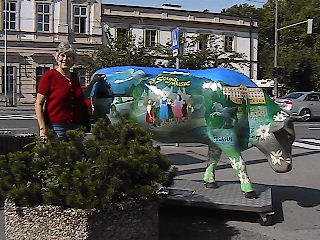
One is never far from being reminded of "The Sound Of Music". No Bull!! (Sorry, I couldn't resist.) There is more than one "Sound of Music" tour which takes you out of town to the hills which are "alive with music" only when the tour buses go by.
Actually the painted bull is due to another, much older, legend. It seems that once upon a time the city was under seige by nasty warlike neighbors. In this situation the seigees want the seigers to think they have plenty of provisions and so are not giving up anytime soon. The Salzburgers accomplished this by letting their one cow be seen each day but painted so that it seemed to be a different cow. The seigers gave up and went home.